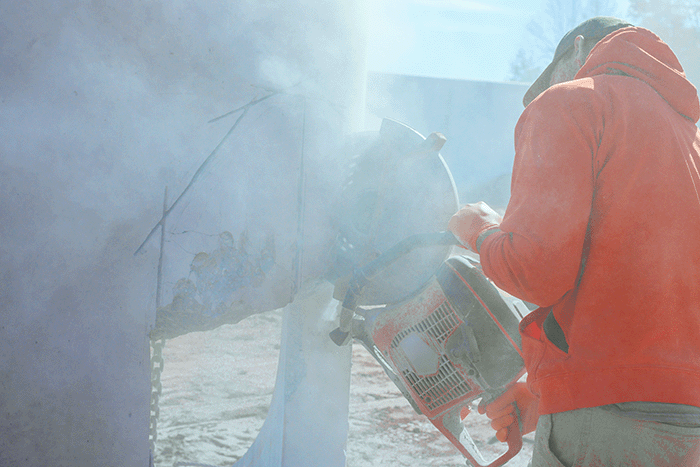Partner with Downstream

Maintaining clean air on an indoor jobsite is more than just good practice—it’s a compliance and safety requirement. Whether you’re renovating an office, retail space, or healthcare facility, construction dust control and indoor air quality management can make or break your project schedule and client satisfaction. Poor air handling not only affects occupants and tradespeople but can also violate building standards and OSHA air quality thresholds. In this guide, we’ll cover the fundamentals of controlling dust and maintaining air quality during tenant improvement (TI) projects, including the use of negative air machines, HEPA filters, and temporary ventilation systems—and how Downstream makes sourcing this equipment simple and reliable.

Tenant improvement work often happens in active or partially occupied buildings, meaning the air you control inside your workspace directly impacts others nearby. Dust from drywall, cutting, and demolition can spread quickly, carrying silica particles and allergens that affect both workers and tenants.
According to the Occupational Safety and Health Administration (OSHA), exposure to respirable crystalline silica can cause long-term respiratory diseases. The Environmental Protection Agency (EPA) also outlines best practices for maintaining indoor air quality (IAQ) during construction to protect building occupants and sensitive materials like electronics or HVAC systems.
In short: dust control isn’t optional—it’s a regulatory and reputational necessity.
The first step in construction dust control is creating a contained environment. This typically involves:
Containment is especially critical in medical offices, data centers, and Class A office spaces where even light dust migration can trigger compliance issues or tenant complaints.
Once your containment zone is set, maintaining negative air pressure ensures dust stays inside the workspace instead of drifting into hallways or adjacent suites.
Negative air machines—also called air scrubbers or negative air units—work by pulling contaminated air through a HEPA filtration system and exhausting clean air outside the work zone.
These machines not only protect surrounding areas but also improve working conditions inside the construction zone itself.
HEPA filters are the backbone of air quality management on a construction site. Certified to capture 99.97% of particles 0.3 microns or larger, they trap dust, mold spores, and fine particulates before they spread.
To maximize effectiveness:
For larger interior jobs, pairing HEPA scrubbers with HEPA vacuums provides an additional layer of cleanliness during finishing and cleanup.
While containment and filtration control particulates, temporary ventilation systems help manage temperature, humidity, and overall indoor comfort.
Proper airflow prevents musty odors, helps paint and adhesive cure, and ensures safe oxygen levels when using certain equipment.
Temporary HVAC units or ventilation fans can also prevent excessive heat buildup in enclosed TI spaces—important for both worker productivity and material performance.
Monitoring is often overlooked but essential.
Use handheld or continuous air quality meters to track:
Real-time feedback lets you adjust ventilation or filtration before issues escalate. Some projects even require third-party IAQ testing before occupancy or turnover—especially in healthcare or lab environments.
Following federal guidance helps ensure compliance and credibility:
These resources outline exposure limits, recommended engineering controls, and testing protocols that apply to most interior construction settings.
Sourcing reliable air management equipment shouldn’t slow down your project.
With Downstream, you can rent air scrubbers, HEPA vacuums, and temporary ventilation units from trusted suppliers—all through one platform. Whether you’re setting up a single negative air zone or managing a full floor renovation, Downstream helps you find the right tools quickly and keep your project compliant with air quality standards.
From pre-construction planning to final turnover, Downstream simplifies every phase of tenant improvement work by centralizing rentals and reducing coordination headaches.
Maintaining indoor air quality during construction requires more than just cleanup—it’s about proactive planning, continuous monitoring, and the right mix of containment, filtration, and ventilation. When done right, dust control keeps your team healthy, your client happy, and your project compliant.
-min.webp)
Quis nostrud exercitation ullamco laboris nisi ut aliquip ex ea commodo consequat. Duis aute irure dolor in voluptate.
